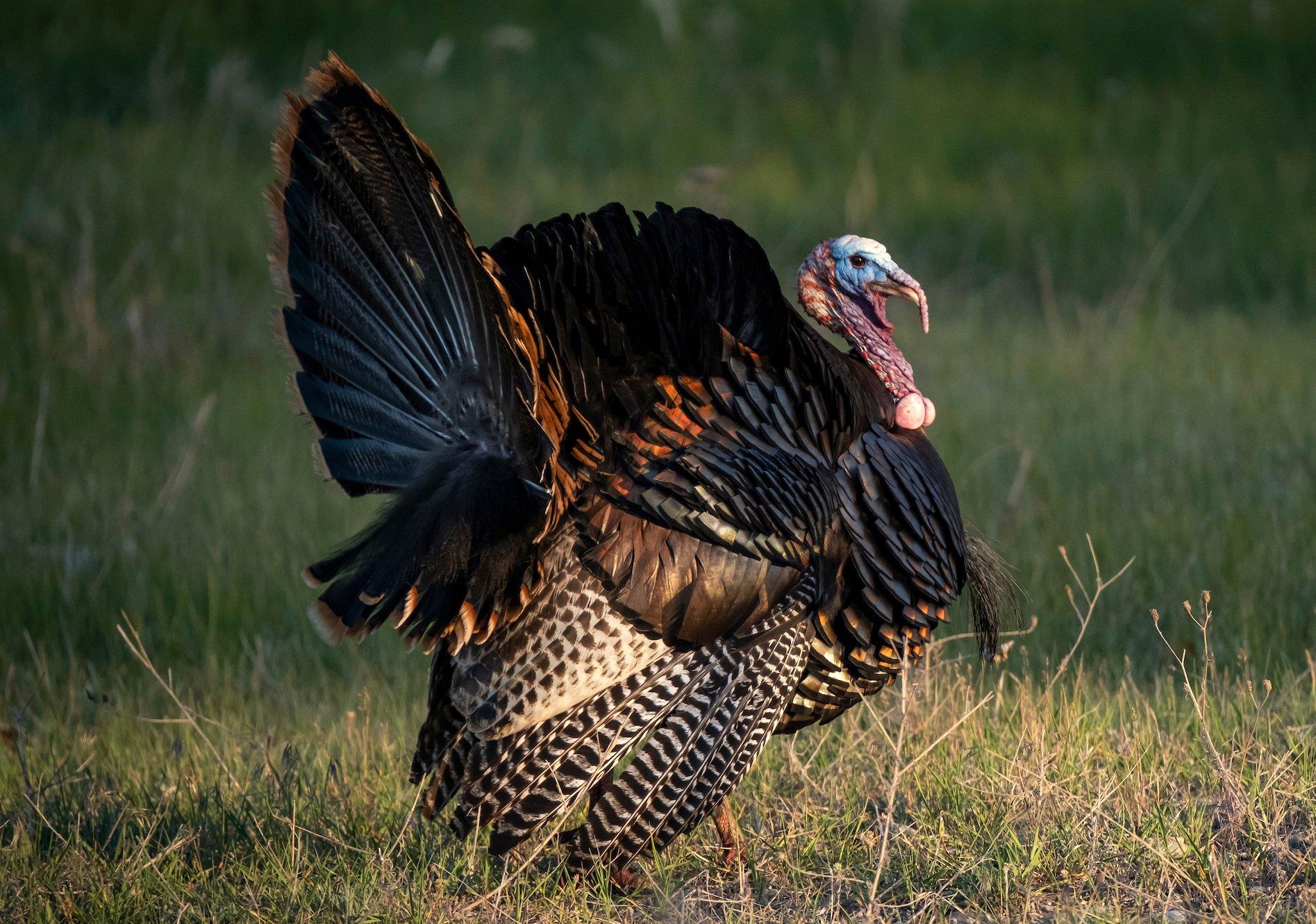Bag limits have been reduced in many states in response to declining turkey numbers. Will that change your travel plans?

Most turkey hunters will have to accept shooting fewer birds than we did during the late 1990s and 2000s. That’s probably not going to change. Will you still travel to hunt?
Turkey geeks typically start the next season the instant the current campaign ends. Those bitten by wanderlust begin plotting out-of-state jaunts and, if they’re honest with themselves, might base their travel plans on the number of turkeys they can potentially kill at each stop.
Some call that efficient. Others would suggest that it amounts to counting figurative chickens before they hatch. Either way, it’s human nature. After all, if you intend to spend lots of time, money and effort on a trip, why wouldn’t you choose destinations where you could shoot multiple gobblers?
But a funny thing has happened on the way to piling up all those longbeards. In response to declining turkey numbers, many destination states have trimmed their season limits. Nebraska, for example, now limits hunters to two spring turkeys instead of three, and you can only take one per day. Kansas only lets hunters take a second gobbler in two hunting units. Oklahoma now limits spring hunters to one bearded turkey.
Those tighter bag limits spawn an obvious question: Is it worthwhile to travel long distances and pay out-of-state fees to shoot one turkey? Some folks say no. Others disagree. Finding a definitive answer requires more digging.
Confessions and Perspective
First, some disclosure. Fairly early in my three decades of traveling to hunt turkeys, I latched onto the idea of prioritizing states with multiple-turkey limits. It made sense. If I hopped on a plane or drove 500-plus miles, I preferred to return home with a cooler bulging with turkey breasts. Those (mostly) efficient multi-bird hunts meant more meat for the freezer, more beards and spurs for the bragging board, more content for articles, and more notches in the box call. Further, because state biologists at that time said killing all those birds did not negatively affect the population, and because I did so legally and it met my personal code of ethics, I had no qualms about it.
At times, I actually eschewed more restrictive trips, avoiding spots such as the Black Hills of South Dakota or Wyoming because the prospect of taking only one turkey didn’t seem to justify the time and expense involved. I never totally blew off one-bird hunts, such as Missouri during the first week of the season or strictly regulated spots in Florida. But I always found a way to augment those trips by hitting two- or three-bird states before or after the one-hitters. After all, the season was brief, and I intended to make the most of it. To me, it was just part of a full turkey campaign; enjoying the bounty when it was offered, and figuring those bonanza road trips made up for tough days at more difficult locales.
(DON’T MISS: 3 Great Turkey Calling Setups)
After a bunch of seasons on my butt pad, and as gray began to dominate my whiskers, the beards, spurs and turkey-pile photos stacked up. When I viewed those images — as I still often do — I began to realize that I didn’t remember and appreciate the number of turkeys my group had killed as much as I valued the experience we’d shared. Maybe that sounds corny or soft, but it’s true. Nowadays, I stare at the hero shot from an epic 2009 Texas hunt, during which seven hunters shot twice as many Rio gobblers in three days, and my thoughts don’t center on 14 dead birds. Rather, I reflect about how glad I am to have shared that camp with a friend who’s no longer with us. And I chuckle at how my buddies chided me after I uttered the word isthmus when describing an area where I’d shot a bird. Likewise, I view photos of my first Merriam’s differently, too. At the time, 22 years ago, I might have secretly regretted not being able to shoot a second gobbler during that South Dakota trip. Now, I look at the folks who attended that camp and see the gorgeous White River prairie country where we hunted, and any silly regrets vanish.
You could argue that my gradual change of heart occurred only after I’d taken advantage of many bonanza opportunities, and you’d be right. But that’s where I’m at.
A wiser, more experienced turkey hunter gave me some great advice about 30 years ago: After you shoot a turkey, you’re essentially left with a pile of meat and feathers. The trophy is not so much in that bird but rather the experience you had hunting it. It’s the gobble. It’s calling and strategy. It’s your heart pounding and your head about to explode. And again, at the risk of sounding hokey, the older I get, the more I cherish each of those experiences over the number of gobblers in the pickup bed.
Of course, that’s just me. I can’t tell other hunters what to think and can only offer suggestions that might influence their decisions.

Traveling turkey hunters must decide if they’re willing to accept a slightly lower return on investment to enjoy fresh experiences.
Is it Worth It?
Ultimately, you must decide whether you consider a one-bird trip to be worthwhile, or if the time, expense and lower return on investment pull you to stay home. Think about why you initially considered a trip. If your goal is to see faraway vistas, take a new subspecies, check another state off your Super Slam list or simply share an adventure with buddies, a one-bird trip doesn’t lose any appeal. Conversely, if time is tight and you want to take as many turkeys as possible, or if you’re chasing a numerical goal — it’s OK to admit it; most of us keep count — you’ll probably lean toward a multi-turkey journey. I’ll only say this about numbers: Be careful when you hang your hat on a figure. There’s no shame in being proud when you kill your 50th, 300th or whatever turkey. But there’s always someone who’s killed more. Realize further that the country is filled with excellent turkey hunters who perhaps haven’t killed awe-inspiring numbers of birds simply because they lack opportunity.
Also, remember this: Times are changing, and as we look back on the past 20 or 30 seasons, it’s easy to realize that the opportunities we’ve enjoyed for years are perhaps fading a bit and might look much different down the road. The turkey boom is finished in most regions, and the hunters of today and tomorrow will likely have to live with prospects that pale a bit when compared to those of the glory days. Right or wrong, effective or futile, states are tweaking season structures and bag limits in an effort to sustain our turkey resources. As a consequence, most turkey hunters will have to accept shooting fewer birds than we did during the late 1990s and 2000s. That’s probably not going to change.
That doesn’t mean you should feel guilty if you have the opportunity for a multi-gobbler hunt. Hey, again, if it’s legal and suits your code of ethics, have at it. Few turkey hunters would claim that a frenzied gobbler binge — say shooting two longbeards in Texas, driving all night to Kansas and then taking two more the next day — doesn’t appeal to them. But also look in the mirror and be honest. Consider what you truly want from a trip. Is it the experience and resulting memories, or another batch of fried turkey breast and more spurs on a necklace?
Many folks, I believe, realize that any day in the turkey woods is time well spent. And certainly, any day you kill a turkey is a banner occasion. If that occurs at a spot you’ve never seen before or perhaps only get to hunt once per year, it’s increasingly special.
When viewed in those terms, you can see why lots of folks — like me — still consider it worthwhile to travel for the chance to take one turkey.
(DON’T MISS: Kill a Turkey with Grandpa’s Shotgun)










